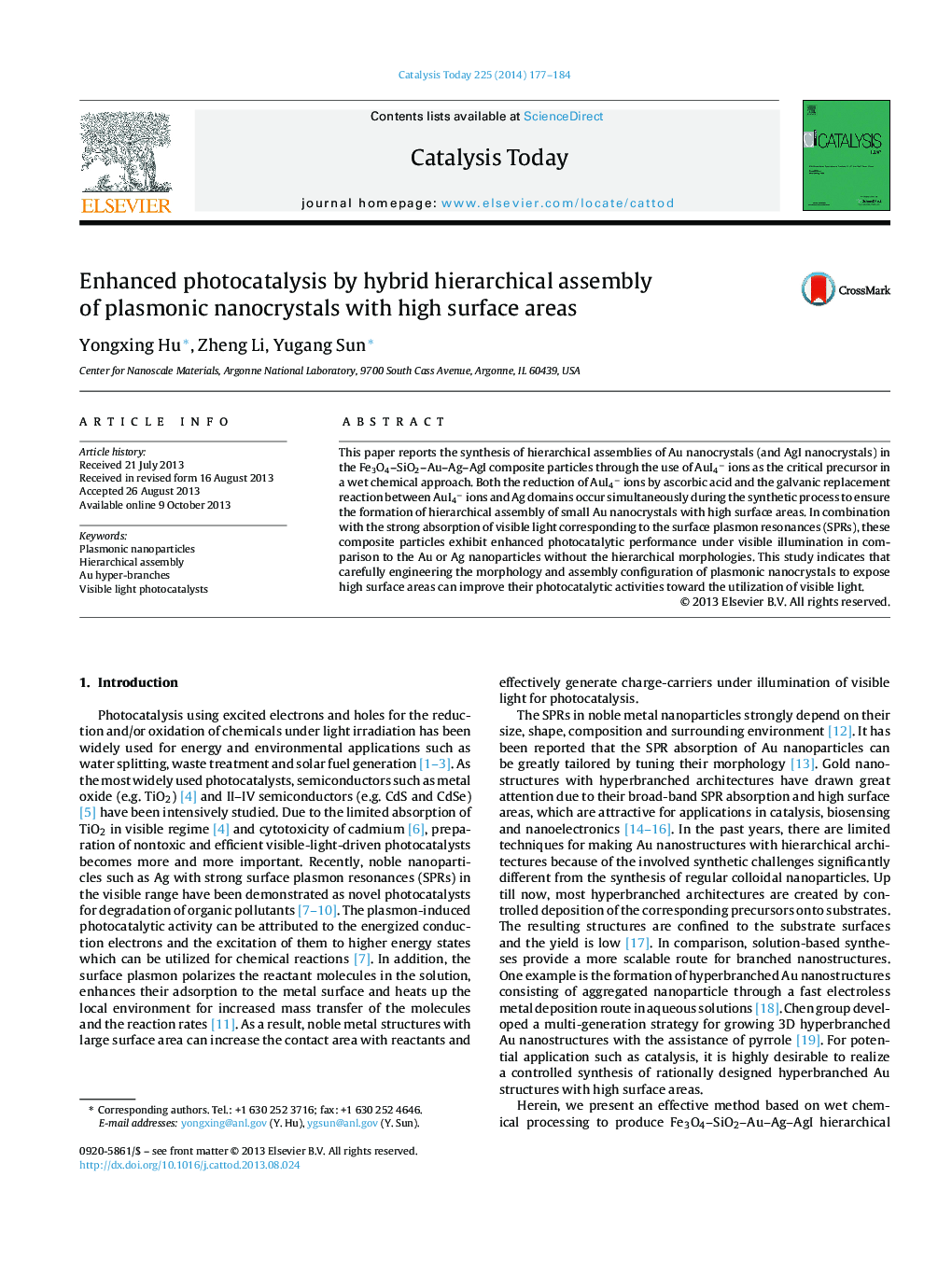| Article ID | Journal | Published Year | Pages | File Type |
|---|---|---|---|---|
| 54300 | Catalysis Today | 2014 | 8 Pages |
•Fe3O4–SiO2–Au–Ag–AgI hierarchical structures with high surface areas were fabricated.•Galvanic replacement and reduction of AuI4− by ascorbic acid occurred simultaneously.•AuI4− was chosen to control the branching growth of Au.•The photocatalytic properties were studied upon visible light irradiation.•The hierarchical hybrid particles showed better photocatalytic activity.
This paper reports the synthesis of hierarchical assemblies of Au nanocrystals (and AgI nanocrystals) in the Fe3O4–SiO2–Au–Ag–AgI composite particles through the use of AuI4− ions as the critical precursor in a wet chemical approach. Both the reduction of AuI4− ions by ascorbic acid and the galvanic replacement reaction between AuI4− ions and Ag domains occur simultaneously during the synthetic process to ensure the formation of hierarchical assembly of small Au nanocrystals with high surface areas. In combination with the strong absorption of visible light corresponding to the surface plasmon resonances (SPRs), these composite particles exhibit enhanced photocatalytic performance under visible illumination in comparison to the Au or Ag nanoparticles without the hierarchical morphologies. This study indicates that carefully engineering the morphology and assembly configuration of plasmonic nanocrystals to expose high surface areas can improve their photocatalytic activities toward the utilization of visible light.
Graphical abstractFigure optionsDownload full-size imageDownload high-quality image (257 K)Download as PowerPoint slide
